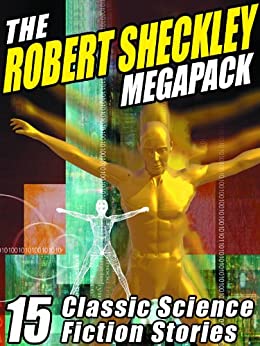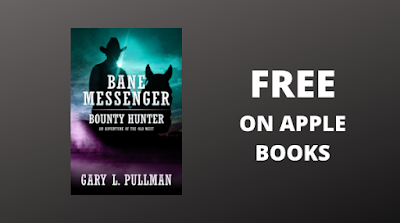Copyright 2020 by Gary L. Pullman
Often,
in horror stories and films, a secret, past or present, drives and
directs protagonists' or antagonists' actions:
Schizophrenia
(Norman Bates [Alfred Hitchcock's
1960 film adaptation of Robert Bloch's 1959 novel Psycho],
Brian De Palma's 1980 film Dressed to Kill,
and David Calloway [John Polson's 2005 film Hide and
Seek]);
crimes
of various kinds (Marion Crane's adultery
and theft
and Norman Bates's murder
in Psycho; Grace
Newman's murders in Alejandr Amenábar's 2001 film The
Others; Freddy Kreuger's murders
in Wes Craven's 1984 film A Nightmare on Elm Street;
the teenage friends' murder in Jim Gillespie's 1997 film adaptation
of Lois Duncan's 1973 novel I Know What You Did Last
Summer; Horrocks's wife's
adultery with Raut in H. G. Wells's 1895 short story “The Cone”;
deceit
or betrayal
(Marion Crane's adultery and her theft of her employer's money in
Psycho;
the adultery of Horrocks's wife and lover Raut in “The Cone”; the
teenage characters' attempt to cover up what they believed to be
their killing of a man in I
Know What You Did Last Summer);
sexual
deviance (voyeurism
in Michael Powell's 1960 film Peeping Tom,
Victor Zarcoff's 2016 film 13 Cameras, and Psycho;
lesbianism
in Daphne du Maurier's 1938 novel Rebecca and
Shirley Jackson's 1959 Gothic horror novel The Haunting of
Hill House; transvestism
in Hitchcock's Psycho,
Brian De Palma's 1980 film Dressed to Kill,
Jonathan Deeme's 1991 film adaption of Thomas Harris's 1988 novel The
Silence of the Lambs; and
transgenderism
in Robert Hiltzik's 1983 film Sleepaway Camp;
and sadism
(Robert Harmon's 1986 film The Hitcher);
past
psychological trauma (the
denial of Angela Baker true sex and gender in Sleepaway
Camp and Carrie White's
victimization by high school bullies in Stephen King's 1979 novel
Carrie and Brian De
Palma's 1974 film adaptation of the book);
vengeance
(many
horror stories and movies, including Edgar Allan Poe's 1846 short
story “The Cask of the Amontillado,” “The Cone,” A
Nightmare on Elm Street,
I Know What You
Did Last Summer,
and a host of others); and
suggestibility
(the narrator-protagonits's
runaway imagination in H. G. Wells's 1894 short story “The Red
Room” and, possibly, the protagonist of Bram Stoker's 1891 short
story “The Judge's House” and his 1914 short story “Dracula's
Guest”).
As
we can see, the same story or film may contain multiple instances of
secret motivators: Hitchcock's Psycho
contains two characters,
Marion Crane and Norman Bates, who, between them, are driven by no
fewer than four types of secrets: schizophrenia, crime (murder),
sexual deviance (voyeurism) (Bates) and deceit or betrayal
(adultery), and crime (theft) (Crane).
On
the surface, such characters appear to be normal and to be motivated
by ordinary drives, such as the need to nurture, the pursuit of
profit, affiliation, pleasure, leisure, generosity, and kindness. The
normal, apparent motivations of these characters seem to “explain”
them; in reality, however, they merely disguise their true desires,
aims, and purposes; they are red herrings, not clues, to the nature
of the characters, fictitious personas that allow the characters to
act without arousing suspicion. Marion Crane is a thief, but she
poses as a traveler. The protagonist of Peeping
Tom and the landlord in
13 Cameras
are both voyeurs and murderers, but the former poses as a
photographer, the latter as nothing more than a landlord. Horrocks,
in “The Cone,” is a vengeful victim of adultery, but he poses as
a tour guide of sorts. The schizophrenic in Hide
and Seek poses as a
nothing more than a psychiatrist who has his daughter Emily's
psychological welfare at heart.
The
disguise of normality is also disarming. It suggests that dangerous
characters are either harmless of beneficial: a motel owner, teenage
friends, scientists, a camper, a mother, a doctor. The disguise of
normality makes it easier for such characters to stalk and slay their
prey. Indeed, such characters can even appear to be the victim,
rather than the victimizer, to him- or herself, if not to the public
(although they often appear to be the victim to the public as well,
at least for a time): David Calloway and Grace Newman are examples.
Stories
and films in which a secret is at the heart of one or more
characters, whether protagonist or antagonist or both, suggest a
threefold division of plot: Part I: Appearance is maintained through
the adopted persona; Part II: the character's secret is discovered or
revealed; and Part III: reality is exhibited as the character's true
identity is perceived.






























